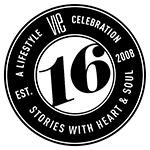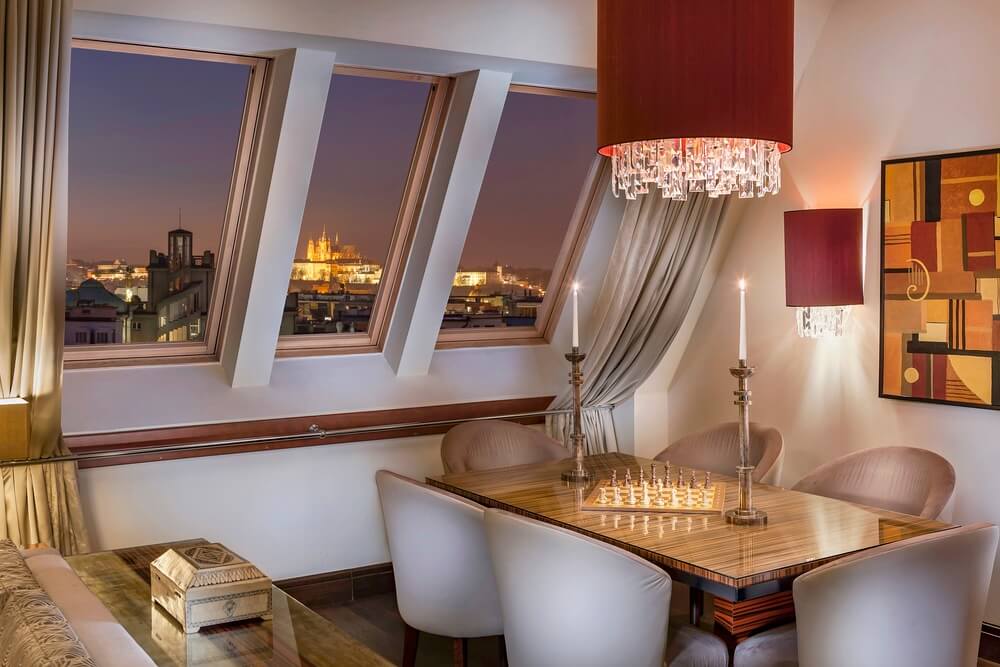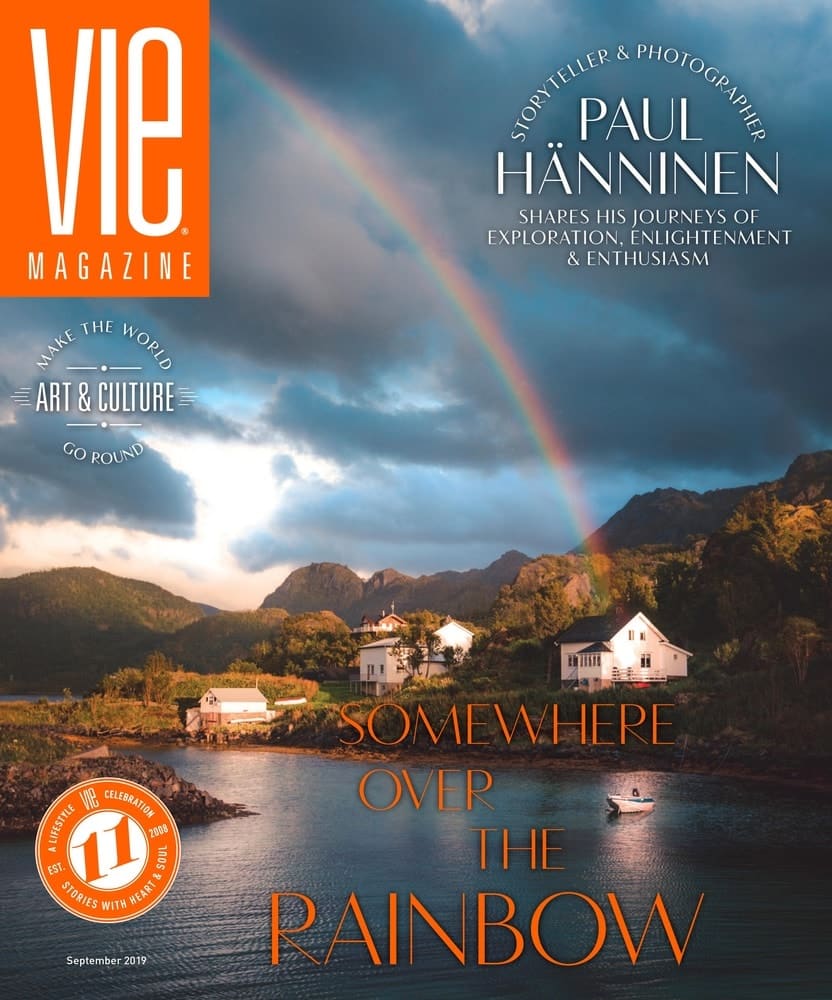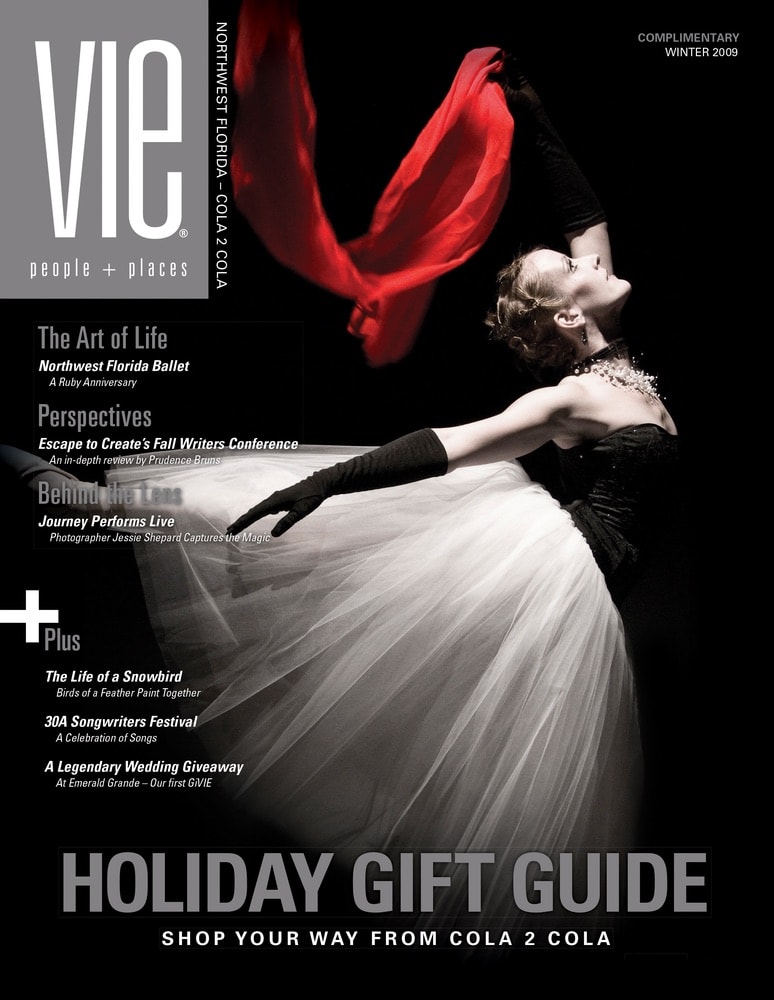
vie-magazine-prague-czech-republic-travel-guide-hero-min
Fairy-Tale Castles and the Future in Prague
By Carolyn O’Neil
Known as the city of a hundred spires, architecturally magnificent Prague is emerging as one of the most popular European destinations for travelers seeking both a walk through history and a vibrant contemporary scene.
Prague, the capital city of the Czech Republic, is a bustling modern metropolis with perfectly preserved architecture dating back to the Middle Ages. Spared much of the damage that leveled other European cities during World Wars I and II, Prague’s historic buildings, bridges, churches, town squares, and winding cobblestone streets beckon visitors to step back in time.
“Prague offers a real-life architectural time line. You can look at a street and see, side by side, a 1920s art deco building next to one from hundreds of years before,” says Robert Wesley, who is formally trained in architecture and leads history tours of Prague.
The cityscape is punctuated with striking contemporary structures, too, such as the Dancing House by American architect Frank Gehry in cooperation with Czech architect Vlado Milunić. It’s said to represent the dancing figures of entertainers Fred Astaire and Ginger Rogers.
A highlight of the walking tour past Gothic churches and baroque buildings includes the medieval Astronomical Clock in the vibrant Old Town Square. Be prepared to share a view of the hourly chiming alongside scores of other onlookers with cameras poised to catch the clock’s animated figures of the twelve apostles and a skeleton ringing a bell to mark the passage of time.
- The Dancing House, designed by Frank Gehry and Vlado Milunić, was inspired by Fred Astaire and Ginger Rogers dancing together. | Photo by Vladimir Sazonov / Shutterstock
Wesley says, “This was state-of-the-art technology when it was built in 1410, and it still works!”
Other musts are a stroll across the lovely pedestrian-only fourteenth-century Charles Bridge built by Charles IV, which is lined with statues of various saints. Then, spend time wandering around the spectacular ninth-century Prague Castle with landscaped gardens and vistas of the city below. This fairy tale–like castle complex, where you can watch the changing of the guard, is the official office of the president of the Czech Republic and was the seat of power for Bohemian kings and Holy Roman emperors. The city’s Jewish Quarter, with five synagogues surviving the Nazi occupation of World War II, celebrates the richness of Jewish life and culture.
The cityscape is punctuated with striking contemporary structures, too, such as the Dancing House by American architect Frank Gehry in cooperation with Czech architect Vlado Milunić.
Other places to discover are the Franz Kafka Museum, dedicated to the Prague-born writer, and the relatively new phenomenon called the Lennon Wall, where social expression through graffiti art is on display.
The city of Prague is a museum in itself. The entire historic center spans both sides of the Vltava, the river that divides the city, and is so well preserved that it was listed as a UNESCO World Heritage site in 1992.
- Photo by 1000 Words Photos / Shutterstock.com
- The Prague Astronomical Clock, or Prague Orloj, was first installed in 1410 at the Old Town Hall. It is the third-oldest astronomical clock in the world and the oldest clock still in operation.
- Statue of Holy Roman Emperor Charles IV in Křižovnické Square | Photo courtesy of Prague Tourism
City Life
Since Czech beer is considered among the best in the world, there’s no shortage of beer halls and even guided pub tours. The food is simple, but after centuries of practice roasting pork, making bread dumplings, and fermenting sauerkraut, the Czechs do it well.
Also globally recognized is the superior quality of crystal made in the Czech Republic. From the tiniest bud vase to the most stunning chandelier, Bohemian handcrafted crystal items are in many shops in Prague. One of the most respected Czech crystal makers, founded in 1857, is Moser—even Queen Elizabeth shops there.
- Photo courtesy of Prague Tourism
- Photo courtesy of Prague Tourism
- Photo courtesy of Prague Tourism
- Photo by yingko / Shutterstock.com
Recent History Remembered
The not-too-long-ago dark days of history are reflected in Prague’s story as well. Nazis occupied the city during World War II, the communists took over in 1948, and then the Soviets rolled in with tanks to take over in 1968.
The city was all but sealed off from the West until 1989 when, inspired by the fall of the Berlin Wall, the so-called Velvet Revolution peacefully swept the former communist regime out of power. Museum exhibits and public banners and displays around Prague today commemorate the heroes who brought about the end of communism thirty years ago.
- The Alcron is a magnificent historic hotel in Prague. Its dining options are abundant, whether you choose to enjoy the art deco Alcron restaurant (above), take a seat at the BeBop bar, or enjoy meals in your room. | Photo courtesy of the Alcron Hotel Prague
- Photo courtesy of the Alcron Hotel Prague
- Photo courtesy of the Alcron Hotel Prague
- The Alcron is a magnificent historic hotel in Prague. Its dining options are abundant, whether you choose to enjoy the art deco Alcron restaurant, take a seat at the BeBop bar, or enjoy meals in your room (above). | Photo courtesy of the Alcron Hotel Prague
Historic Hotel in Prague
At the very center of it all, as a microcosm of the city’s ups, downs, and rebirth, is the historic Alcron Hotel Prague. Dating back to 1932, this art deco hotel is within walking distance of iconic landmarks. But it’s what’s inside the building that reveals the real magic of this place. Here you’ll find marble staircases and copper railings, priceless art collections, and over two hundred rooms and suites richly decorated with art deco furnishings and all the comforts of modern technology.
In the 1930s, founder and owner Alois Krofta, a building engineer by trade, designed electrical innovations—including automatic firefighting devices and a special signal system for guests to call room service—that put the hotel in a class of its own at the time. The Alcron became the place to stay in Prague for the rich and famous, from maharajas to movie stars.
Today, the independently owned Alcron Hotel Prague has risen to become part of the bright future of travel to the Czech capital for business and pleasure. It still holds on to the mission of its roots by dazzling guests with the most excellent accommodations and service.

People drinking beer at the outdoor tables of Velkopřevorský Mlýn restaurant in Malá Strana, Prague | Photo by Alena Veasey / Shutterstock
Czech Art and Art of Cuisine
The idea for the name of the hotel began with letters from the founder’s first and last names (AL-ois KRO-fta), but then Krofta was inspired to use the name of a sailing vessel in Greek mythology, the Alcron. Replicas of the ship logo can still be found throughout the hotel and on the original 1932 fireplace door in the tiny Alcron restaurant, which is adorned with bold murals of dancing couples and city skylines. Known for being at the forefront of Prague’s culinary scene, multicourse tasting menus feature elegant dishes, such as veal sirloin with morel mushrooms served with a vintage Bordeaux.
More impressive art greets guests in the hotel’s La Rotonde restaurant, where the focal point is a bronze sculpture of a young prima ballerina who once graced the stages of Prague. Traditional Czech specialties such as beef goulash and veal schnitzel are served here, as are elaborate weekend brunches. And how about light-as-a-cloud dumplings filled with strawberries for dessert? Another culinary specialty at the Alcron: Czech cooking classes taught by the hotel’s chefs.
Traditional Czech specialties such as beef goulash and veal schnitzel are served here, as are elaborate weekend brunches.
More inventive tastes are served in the Alcron’s buzzy BeBop Bar. It specializes in creative mixology where guests add the final touches to their themed cocktails with props such as a lipstick tube filled with rhubarb liqueur or a toothpaste tube filled with raspberry puree.
Times weren’t always this pleasant at the Alcron, but the stories are intriguing. Communist secret agents bugged the ashtrays to spy on guests. Actress Shirley Temple Black, who was at the hotel on the night of the Soviet invasion in 1968, was evacuated to Germany by the American Embassy. She later became the US Ambassador to what was Czechoslovakia in 1989.
There’s so much to reminisce over cocktails or local beers at the BeBop Bar, so even if you’re not staying at the Alcron, it’s worth a stop during your tour of Prague!
— V —
For more information on Prague tourism, visit Prague.eu/en, and to book your stay at the Alcron Hotel Prague, head to AlcronHotel.com.
Share This Story!
KEEP UP WITH THE LATEST STORIES FROM VIE
















































































































































